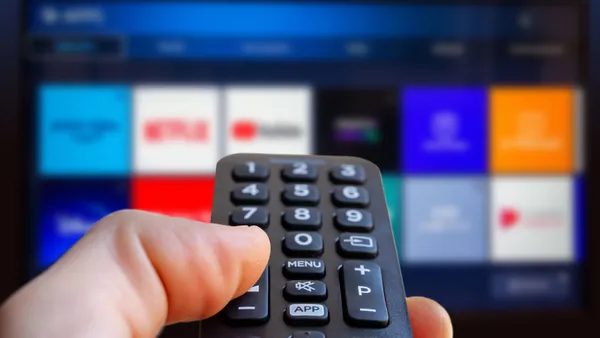Dive Brief:
- Sixty-six percent of marketers expect that their programmatic advertising budgets will increase in the coming months, according to a new study from Ascend2 shared with Marketing Dive. "The State of Programmatic Advertising" report is based on survey conducted the week of May 4, 2020 that had 264 respondents.
- Audience targeting was named the most effective tactic by 73% of respondents when queried about how to drive positive results from programmatic ads. Keyword targeting was named by 41%, retargeting by 27%, contextual targeting by 26% and geo-targeting by 22%.
- On the topic of metrics, 60% said return on investment (ROI) is the most important metric they measure, while 38% pointed to return on ad spend (ROAS) as the most important. Thirty-four percent put click-through-conversion (CTC) at the top of their list.
Dive Insight:
Ascend2's report points to some of the challenges and opportunities in programmatic advertising at a time when many marketers are cutting back on their budgets and looking to stretch their dollars further amid an economic downturn following months of coronavirus-related shutdowns. One of programmatic's big appeals for marketers has been its ability to improve the efficiency of online ad buying, a characteristic that is quickly changing along with the broader landscape during the pandemic, Ascend2 said.
While the report clearly shows that marketers appreciate programmatic's potential in using targeted ads to drive results, the findings also indicate that targeting remains one of programmatic's biggest challenges. Nearly half (46%) of marketers named audience targeting as the top challenge when executing a programmatic advertising strategy, while 37% pointed to budget allocation. Other challenges highlighted include: personalization, named by 32%; achieving ROI (30%); data quality (30%); ad creative (22%); program and channel management (21%) and AI and machine learning (8%).
Separate research from the 4A's reveals other challenges with programmatic. In a report published with The 614 Group last year, the trade organization found media buying needs more time and investment to fulfill its promise of providing full automation. Ninety percent of the media professionals interviewed for the report said advertising automation needs to go beyond replacing manual tasks by using algorithms, machine learning or artificial intelligence to handle more complex media-buying decisions.
Additionally, a lack of transparency is a problem for the sector, with the programmatic advertising supply chain between marketers and online publishers seeing about half the money spent by brands going to digital middlemen. Remarkably, 15% of those dollars disappear into the unknown, according to recent research by the Incorporated Society of British Advertisers.
Some marketers are addressing these challenges by taking greater control over their programmatic programs. The Ascend2 findings indicate 82% of marketers have taken their programmatic programs in-house to some extent, reflecting a broader trend across brand marketers toward in-housing important capabilities. Among the 82% of respondents who are taking this approach with programmatic, 29% use in-house resources exclusively and 53% use a combination of in-house and outsourced resources.
At a time when many consumers are spending less because they're out of work or are being more cautious with their money, marketers are hoping programmatic ads can help them drive sales. Sales were named as the primary objective for programmatic ads by 53% of Ascened2 respondents. Other top objectives include: lead generation, named by 47%; brand awareness (47%); customer retention (36%), and social engagement (22%).
With 76% of respondents saying they are using programmatic as part of their digital marketing and 93% seeing some measure of success from their efforts, the strategy clearly already plays a significant role in digital marketing. Ascend2's report points to how the strategy may gain further steam in the months ahead as marketers increase their programmatic budgets.














